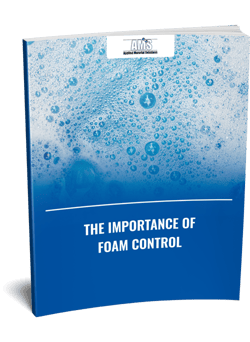Checking Out Cutting-Edge Foam Control Technologies for Lasting Practices
Checking Out Cutting-Edge Foam Control Technologies for Lasting Practices
Blog Article
A Comprehensive Guide to Implementing Foam Control Solutions in Your Workflow
Reliable foam control is an essential aspect of functional efficiency that commonly goes forgotten. Understanding the complexities of foam generation can dramatically impact both productivity and product high quality. This overview lays out the various difficulties presented by foam and the diverse options readily available, offering a framework for selecting and applying the most ideal methods. By examining essential aspects such as application compatibility and personnel training, companies can optimize their foam monitoring efforts. As we explore these parts, the possibility for transformative improvements in your procedures comes to be noticeable. What actions will you take following?
Comprehending Foam Challenges
Foam obstacles are a substantial worry across numerous markets, impacting functional effectiveness and product top quality. The formation of too much foam can impede processes such as blending, transportation, and storage space, resulting in increased downtime and waste. In fields like food and beverage, drugs, and petrochemicals, foam can hinder production lines, creating product inconsistencies and contamination threats.
Furthermore, foam can block devices functionality, causing expensive fixings and maintenance. In wastewater treatment, foam can interfere with clarifier operations, resulting in reduced therapy effectiveness and governing compliance problems.
Recognizing the underlying root causes of foam generation is essential for reliable management. Aspects such as surfactants, temperature level fluctuations, and anxiety degrees can all contribute to foam manufacturing. Determining these aspects allows industries to apply targeted approaches that lessen foam development while maintaining item stability.
Kinds Of Foam Control Solutions

Mechanical options include the usage of devices such as foam skimmers or defoamers. Chemical solutions, on the other hand, include the application of defoaming agents-- materials that disrupt the foam structure, leading to its collapse. Foam Control.
Lastly, functional techniques concentrate on process changes. This might include modifying devices criteria, such as temperature level and pressure, or changing the circulation prices of fluids to reduce foam generation. Carrying out excellent housekeeping practices can additionally alleviate foam formation by reducing impurities that contribute to foam stability.
Choosing the proper foam control option involves evaluating the specific needs of the procedure, including the kind of procedure, the features of the materials involved, and safety factors to consider.
Selecting the Right Products
Choosing the best foam control items requires a thorough understanding of the details application and its distinct obstacles. Factors such as the kind of foam, the setting in which it occurs, and the wanted outcome all play crucial duties in item selection. Foam Control. As an example, in industries like food handling, it is critical to pick food-grade defoamers that follow safety regulations while effectively handling foam.
Furthermore, consider the viscosity of the fluid where the foam trouble exists. Some products are created for low-viscosity applications, while others are customized for thicker liquids. Compatibility with existing processes is another essential find this element; the selected foam control agents should integrate effortlessly without disrupting general operations.
One more vital element is the technique of application. Some products might require dilution, while others can be applied straight. Examining the convenience of use and the needed dosage can offer insights right into the item's efficiency and cost-effectiveness.
Implementation Methods
Successful implementation approaches for foam control solutions need a systematic strategy that lines up item selection with functional demands. The initial step entails a complete evaluation of the procedures where foam happens, determining certain locations that demand treatment. By engaging cross-functional teams, including engineering, manufacturing, and top quality assurance, organizations can gather understandings that inform the selection of one of the most efficient foam control products.
Next, it is essential to develop clear objectives for foam decrease, ensuring that these objectives are possible and quantifiable. This may involve specifying acceptable foam levels and the timelines for execution. Educating workers on the buildings and application approaches of chosen foam control representatives is equally important, as appropriate usage is essential for ideal results.
In addition, integrating foam control services right into existing workflows needs mindful planning. Eventually, a well-structured approach will improve functional efficiency while successfully managing foam-related challenges.
Surveillance and Assessing Efficiency
Surveillance and evaluating the efficiency of foam control remedies is important for making certain that implemented techniques produce the desired results. This process involves organized data collection and investigate this site analysis to analyze the efficiency of foam control representatives and strategies. Trick efficiency indications (KPIs) should be established prior to application, enabling a clear baseline against which to measure progress.

Reviewing performance additionally requires periodic evaluations of foam control procedures and representative effectiveness. This can be completed via tasting and screening, allowing operators to determine if current options are satisfying functional requirements. In addition, it is crucial to get responses from staff member who engage with these systems daily, as their understandings can disclose operational subtleties that measurable information might ignore.

Ultimately, a structured tracking and analysis structure aids recognize essential adjustments, guaranteeing that foam control services remain effective, affordable, and aligned with organizational goals.
Verdict
In verdict, efficient foam control solutions are necessary for optimizing functional efficiency and preserving item quality. A thorough understanding of foam difficulties, incorporated with the selection of proper products and application approaches, promotes the effective administration of foam generation.
Applying good housekeeping methods can additionally reduce foam development by lowering contaminants that contribute to foam security.
Picking the right foam control products calls for an extensive understanding of the details application and its unique difficulties (Foam Control).Effective implementation techniques for foam control options call for a systematic technique that aligns item option with operational requirements.In verdict, effective foam control options index are important for maximizing operational performance and maintaining product top quality. A complete understanding of foam difficulties, integrated with the option of ideal items and application approaches, helps with the successful monitoring of foam generation
Report this page